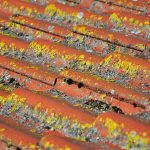South Sea Pearls
In natural circumstances a pearl is produced by a mollusc as a reaction to an infection in the lining. The infection is often caused by a parasite and in response the mollusc produces a sac around the site and carries calcium carbonate to the sac to fight off the threat. The pearl is the product of this calcium carbonate. Almost every mollusc in the world is capable of creating a pearl although it is only certain ones which are of any value. A pearl which is created spontaneously and naturally by this process is an extremely rare find and these pearls are classed among the most precious of gems.
Whilst they used to be found naturally occurring a South Sea Pearl is now most commonly one which is harvested, meaning that the threat is injected into the shell lining and the mollusc is then left to produce the pearl as it might do naturally. South Sea Pearls are farmed on a mass scale in the South Sea, which is the area between the southern coast of China and the northern coast of Australia and an estimated 60% of the world’s South Sea Pearl production is done in Australian territory although there is now Japanese activity off the coast of Indonesia and also farming process in the sea off the Philippines. South Sea Pearls are the produce of the Pintcada Maxima Mollusc which is distinctive because of its silver or gold lipped shell.
Appearance
The South Sea Pearl is the largest of cultured pearls and can have a diameter of between 9 and 20mm, although they tend to average at 13mm. The reason for their large size is that whilst other pearls are harvested after between 9 and 16 months South Sea Pearls are left for 2 years prior to harvesting.
Uses and Care
Due to their large size and attractive colours South Sea pearls are used in the production of many items of jewellery. As they are soft and can be easily damaged they have special instructions for their care and it is extremely important for their appearance and shape that they be properly looked after. They should always be wiped down with a soft cloth after wear as the natural acids which occur on the skin can damage them.





